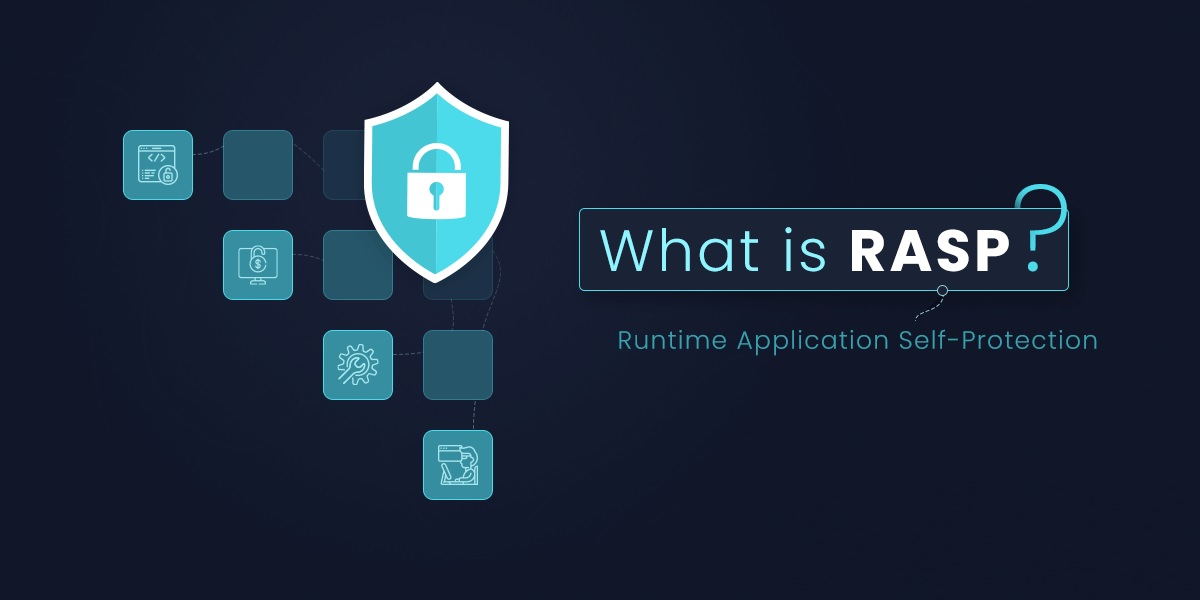Safeguarding Software Integrity: A Comprehensive Guide to Runtime Application Self-Protection
In an era marked by relentless cyber threats, ensuring the security of software applications has become paramount. Traditional security measures, while effective to a certain extent, often fall short in dynamically changing threat landscapes. Runtime Application Self-Protection (RASP) emerges as a groundbreaking solution, offering real-time defense mechanisms within the application environment itself. The concept of RASP, its significance, implementation strategies, and the future of application security.
Understanding Runtime Application Self-Protection
At its core, Runtime Application Self-Protection (RASP) is an advanced security technology designed to detect and prevent security threats within running applications. Unlike conventional security measures that operate at the network or system level, RASP integrates directly into the application runtime environment, providing granular visibility and control over application behaviors.
The Significance of RASP
- Real-time Threat Detection: RASP continuously monitors application behavior in real-time, enabling the immediate detection of malicious activities such as SQL injection, cross-site scripting (XSS), and code injection attacks.
- Contextual Awareness: By residing within the application runtime, RASP possesses deep contextual insights into application logic, user interactions, and data flows. This contextual awareness enhances the accuracy of threat detection and allows for precise response actions.
- Reduced Attack Surface: Traditional security measures often rely on perimeter defenses, leaving vulnerabilities within the application itself. RASP mitigates this risk by offering protection at the application layer, significantly reducing the attack surface and enhancing overall security posture.
Implementation Strategies
- Agent-based RASP: In this approach, RASP agents are embedded directly within the application runtime environment. These agents intercept and analyze application traffic, enabling real-time threat detection and mitigation. Agent-based RASP offers seamless integration with existing application architectures but may incur performance overhead.
- Library-based RASP: Library-based RASP involves the integration of RASP functionality as a library or module within the application codebase. This approach provides developers with greater flexibility and control over security policies and enforcement mechanisms. However, it requires additional development effort and maintenance.
- Cloud-based RASP: Cloud-based RASP solutions operate as a service, offering centralized threat detection and management capabilities. These solutions leverage cloud infrastructure to analyze application traffic and apply security policies in real time. Cloud-based RASP is particularly suitable for distributed or cloud-native applications but may raise concerns regarding data privacy and compliance.
Key Features of RASP Solutions
- Dynamic Analysis: RASP solutions employ dynamic analysis techniques to inspect application behavior at runtime. By monitoring function calls, data flows, and user inputs, RASP can identify and respond to security threats as they occur.
- Policy-Based Protection: RASP security enables organizations to define custom security policies tailored to their specific application requirements. These policies dictate how the RASP solution should respond to different types of threats, including blocking malicious requests, logging security events, or triggering alerts for further investigation.
- Integration with DevOps Pipelines: To streamline the deployment and management of RASP solutions, integration with DevOps pipelines is essential. By incorporating RASP into continuous integration/continuous deployment (CI/CD) workflows, organizations can ensure that security controls are automatically applied throughout the software development lifecycle.
Challenges and Considerations
- Performance Overhead: Implementing RASP may introduce performance overhead, particularly in resource-constrained environments or latency-sensitive applications. Careful optimization and tuning are necessary to minimize any adverse impact on application performance.
- Compatibility and Interoperability: RASP solutions must be compatible with a wide range of programming languages, frameworks, and application architectures. Ensuring seamless integration and interoperability across diverse environments can be challenging, requiring extensive testing and validation.
- Security Policy Complexity: Managing complex security policies within RASP solutions can be daunting, especially for large-scale or distributed applications. Organizations must invest in proper policy design, documentation, and training to effectively utilize RASP capabilities without impeding productivity.
Future Directions
- AI and Machine Learning: The integration of artificial intelligence (AI) and machine learning (ML) technologies holds immense potential for enhancing RASP capabilities. By leveraging AI-driven algorithms, RASP solutions can adaptively learn from emerging threats and anomalous patterns, bolstering proactive threat detection and mitigation.
- Containerization and Microservices: As organizations embrace containerization and microservices architectures, RASP solutions must evolve to meet the unique security challenges posed by these environments. Container-aware RASP technologies capable of dynamically adjusting security policies based on container orchestration events are likely to emerge.
- Zero-Trust Security Models: In the era of zero-trust security models, RASP plays a crucial role in enforcing security controls at the application level, regardless of the network perimeter. Future RASP solutions may integrate seamlessly with zero-trust architectures, providing comprehensive protection across distributed and hybrid cloud environments.
Addressing Emerging Threat Landscapes
In today’s interconnected digital ecosystem, the threat landscape is constantly evolving, presenting new challenges for organizations striving to protect their applications and data. RASP emerges as a crucial line of defense against a myriad of sophisticated cyber threats, including zero-day exploits, advanced persistent threats (APTs), and insider attacks. By operating within the application runtime environment, RASP solutions can detect and respond to these threats in real time, mitigating the risk of data breaches, financial losses, and reputational damage.
Adaptive Security Controls
One of the key advantages of RASP is its ability to adaptively adjust security controls based on evolving threat conditions and application behavior. Unlike static security measures that rely on pre-defined rules or signatures, RASP solutions leverage dynamic analysis techniques to intelligently identify anomalies and deviations from normal behavior. This adaptability enables RASP to effectively defend against zero-day exploits and polymorphic malware, which can evade traditional security defenses by constantly mutating and evolving.
Enhancing Compliance and Regulatory Requirements
In an era of stringent data privacy regulations and industry-specific compliance standards, ensuring compliance with regulatory requirements is paramount for organizations across various sectors. RASP solutions play a critical role in enhancing compliance by providing granular visibility into application security posture, facilitating real-time monitoring of security events, and generating comprehensive audit logs and reports. By demonstrating proactive measures to protect sensitive data and mitigate security risks, organizations can strengthen their regulatory compliance efforts and avoid costly penalties.
Continuous Monitoring and Incident Response
Effective incident response is a critical component of any comprehensive cybersecurity strategy, enabling organizations to minimize the impact of security incidents and swiftly mitigate threats. RASP solutions facilitate continuous monitoring of application behavior and provide real-time alerts and notifications in the event of security incidents or anomalies. By integrating RASP with incident response processes and workflows, organizations can automate response actions, such as blocking malicious requests.
Conclusion
Runtime Application Self-Protection (RASP) represents a paradigm shift in application security, empowering organizations to defend against evolving cyber threats with unprecedented precision and agility. By embedding security controls directly within the application runtime environment, RASP offers real-time threat detection, contextual awareness, and reduced attack surface, thereby safeguarding software integrity in an increasingly hostile digital landscape. As RASP continues to evolve, driven by advancements in AI, cloud computing, and containerization, its role in ensuring the resilience and security of modern applications will become increasingly indispensable. Visit appsealing for more info.





